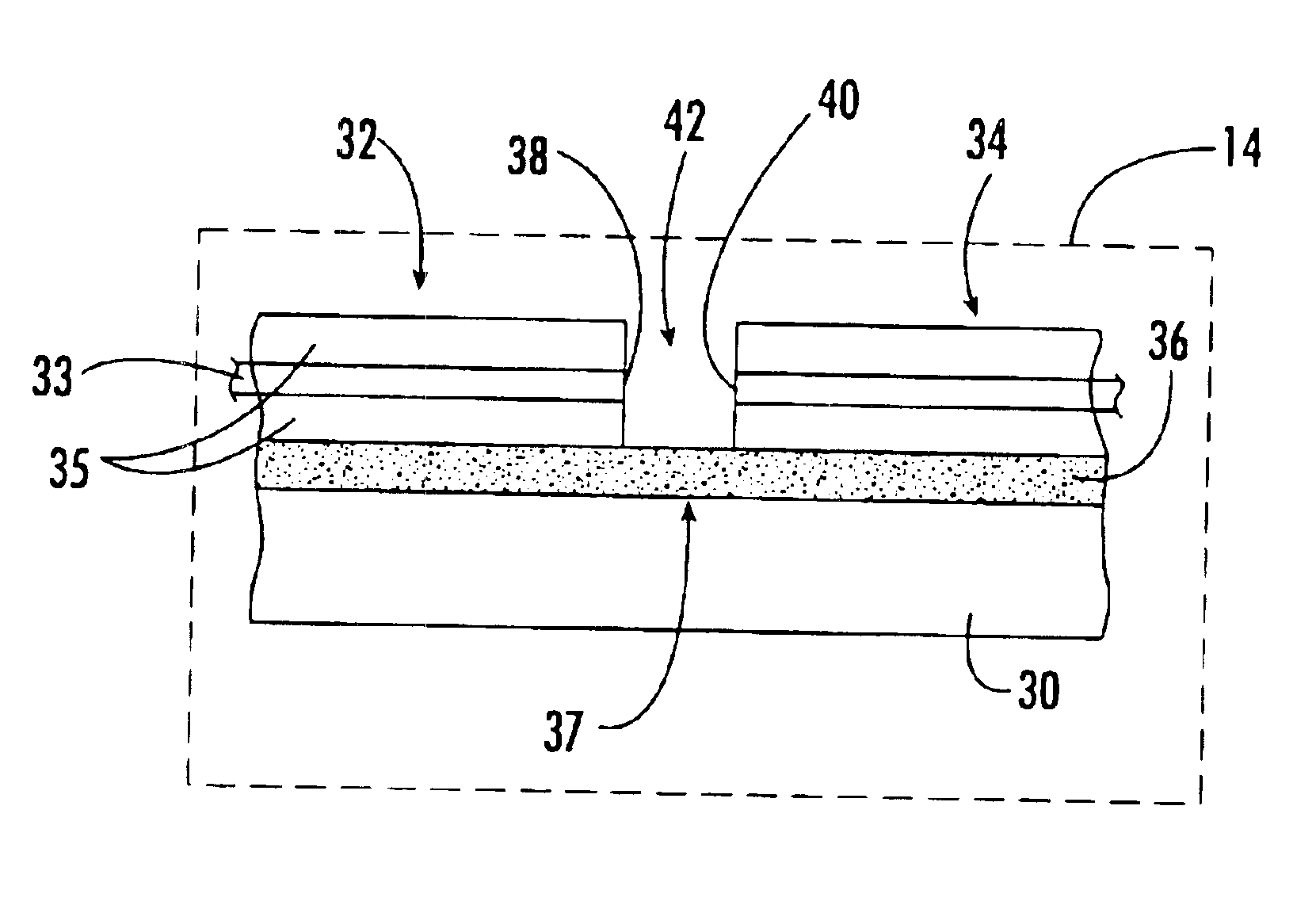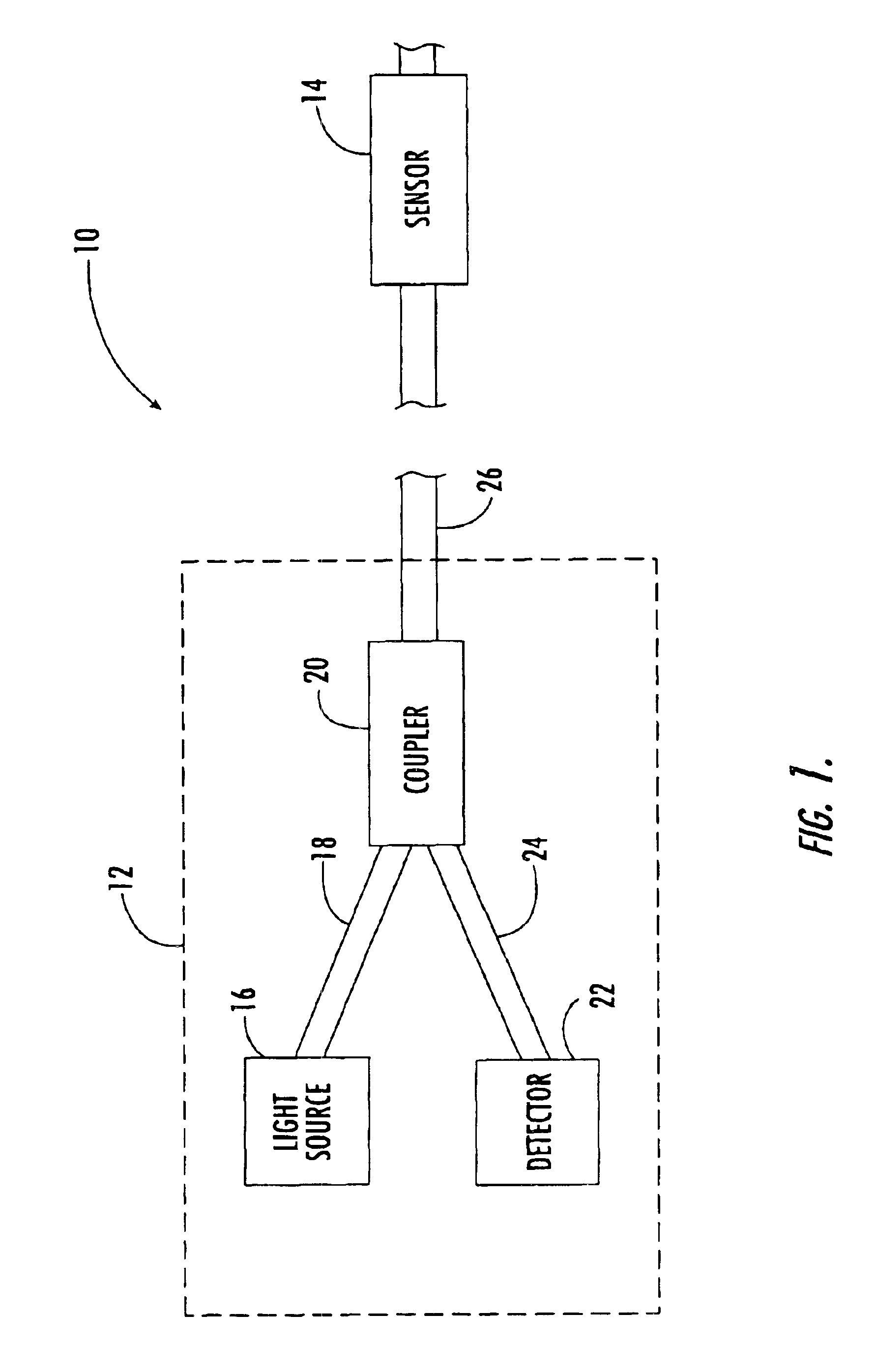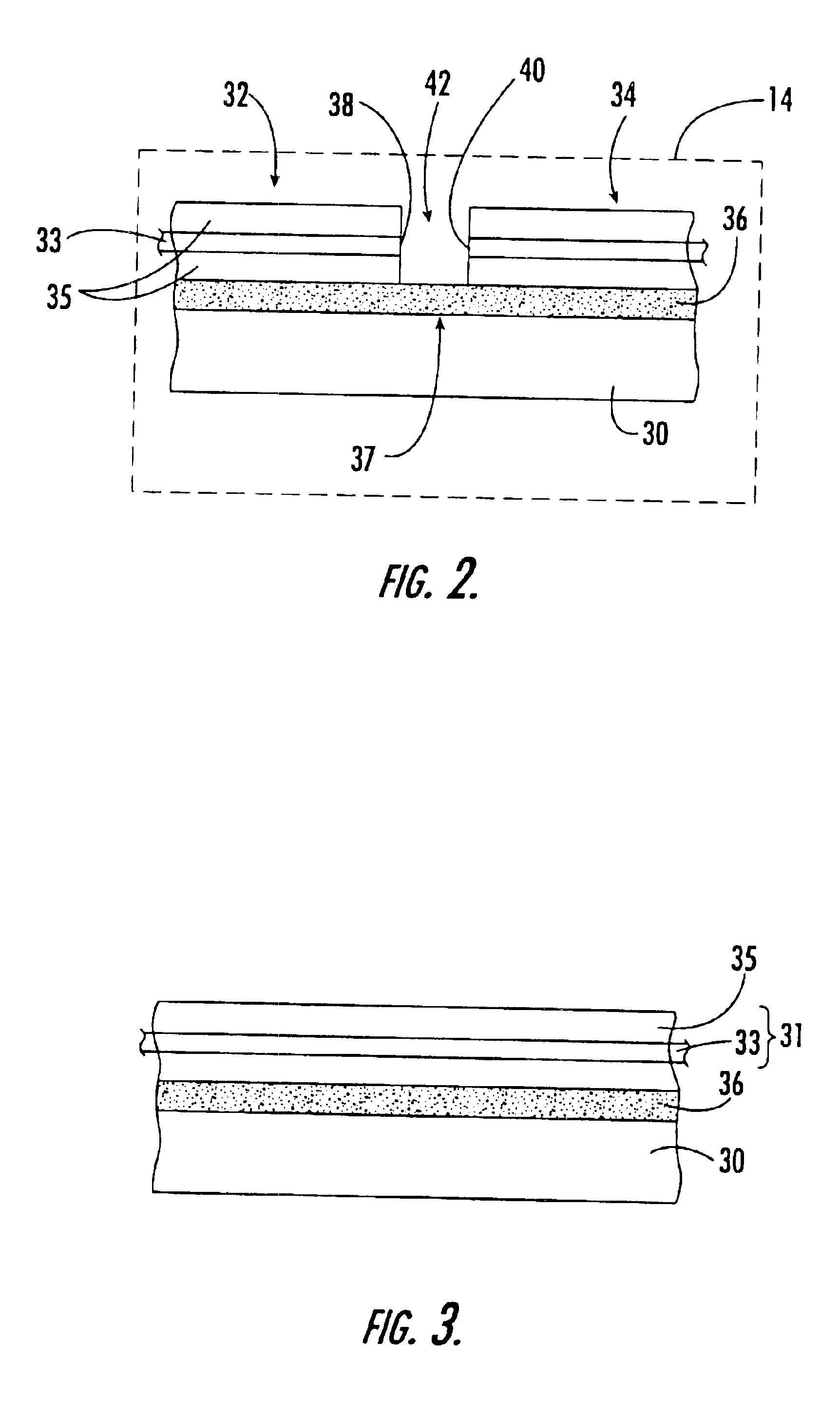Fiber optic Fabry-Perot interferometer and associated methods
a fiber optic fabryperot and interferometer technology, applied in the field of optical sensors, can solve the problems of difficult automation of processes, high production costs, and high production costs, and achieve the effects of less production costs, less timely processes, and easy automation
- Summary
- Abstract
- Description
- Claims
- Application Information
AI Technical Summary
Benefits of technology
Problems solved by technology
Method used
Image
Examples
Embodiment Construction
[0016]The present invention will now be described more fully hereinafter with reference to the accompanying drawings, in which preferred embodiments of the invention are shown. This invention may, however, be embodied in many different forms and should not be construed as limited to the embodiments set forth herein. Rather, these embodiments are provided so that this disclosure will be thorough and complete, and will fully convey the scope of the invention to those skilled in the art. Like numbers refer to like elements throughout. The dimensions of layers and regions may be exaggerated in the figures for clarity.
[0017]Referring to FIGS. 1 and 2, a fiber-optic Fabry-Perot interferometric (FFPI) sensor system 10 will now be described. The system 10 includes a control and signal processor 12 coupled to a FFPI sensor 14 via fiber optic cable 26. The sensor 14 can be located kilometers away from the processor 12, and requires no electrical power. The processor 12 includes light source 1...
PUM
| Property | Measurement | Unit |
|---|---|---|
| coefficient of thermal expansion | aaaaa | aaaaa |
| piezoelectric | aaaaa | aaaaa |
| flexible | aaaaa | aaaaa |
Abstract
Description
Claims
Application Information
 Login to View More
Login to View More - R&D
- Intellectual Property
- Life Sciences
- Materials
- Tech Scout
- Unparalleled Data Quality
- Higher Quality Content
- 60% Fewer Hallucinations
Browse by: Latest US Patents, China's latest patents, Technical Efficacy Thesaurus, Application Domain, Technology Topic, Popular Technical Reports.
© 2025 PatSnap. All rights reserved.Legal|Privacy policy|Modern Slavery Act Transparency Statement|Sitemap|About US| Contact US: help@patsnap.com



